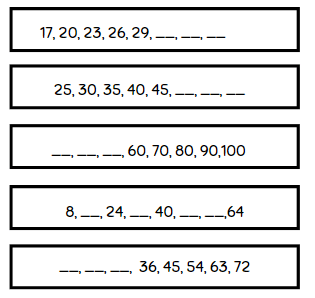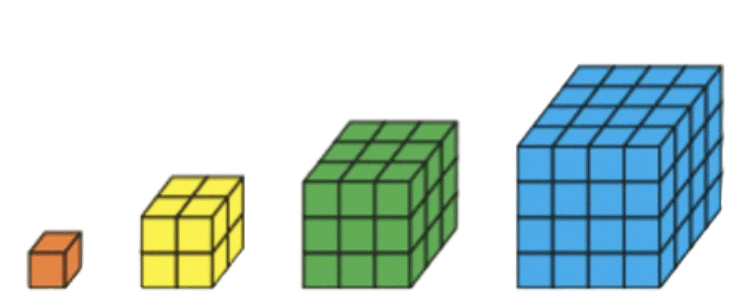Worksheet: Patterns in Mathematics | Worksheets with Solutions for Class 6 PDF Download
| Table of contents |

|
| Learning Pattern |

|
| Fill in the Blanks |

|
| True or False |

|
| Word Problem |

|
Learning Pattern
Q1: Find out the missing numbers and figure out what the pattern rule is for each box  Q2: Find out what type of pattern is represented by the given diagram and write number pattern for the same :
Q2: Find out what type of pattern is represented by the given diagram and write number pattern for the same :
Q3: Find out what type of pattern is represented by the given diagram and write number pattern for the same

Fill in the Blanks
Q1: A ________ polygon is a shape with all sides and angles equal.
Q2: The sequence 1, 8, 27, 64, ... represents the ________ of numbers.
Q3: ________ numbers can be represented as dots forming a perfect square.
Q4: The pattern 2, 4, 6, 8, 10, ... is a sequence of ________ numbers.
Q5: ________ numbers increase by the same amount each time, and this sequence is called counting numbers.
True or False
Q1: The sequence 1, 4, 9, 16, 25, ... is an example of cube numbers.
Q2: A regular pentagon has equal sides but different angles.
Q3: The sequence of odd numbers starts with 1, 3, 5, 7, ...
Q4: A shape sequence starting with a square and adding one side each time would form polygons with increasing numbers of sides.
Q5: The number 36 can be both a square number and a triangular number.
Word Problem
Q1: Riya is stacking books in a pyramid shape. The first row has 1 book, the second has 3, the third has 6. If she continues this pattern, how many books will be in the fifth row?
Q2: A honeycomb follows a hexagonal pattern. If the first row has 1 cell, the second has 7 cells, and the third has 19 cells, how many will be in the fourth row?
Q3: A school’s staircase follows a pattern: The first step has 2 tiles, the second has 4, the third has 6. How many tiles will be on the 10th step?
Q4: Give a diagrammatic representation of triangular numbers.
Q5: Represent 36 as both triangular and square numbers.
You can see the solutions of worksheet here.
FAQs on Worksheet: Patterns in Mathematics - Worksheets with Solutions for Class 6
| 1. What are patterns in mathematics? |  |
| 2. Why are patterns important in learning mathematics? |  |
| 3. How can I identify patterns in number sequences? |  |
| 4. What are some common types of patterns found in mathematics? |  |
| 5. How can I practice recognizing patterns in mathematics? |  |





















